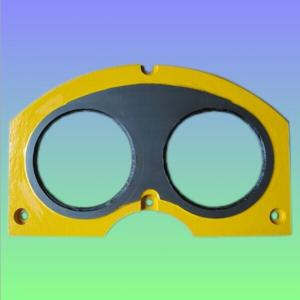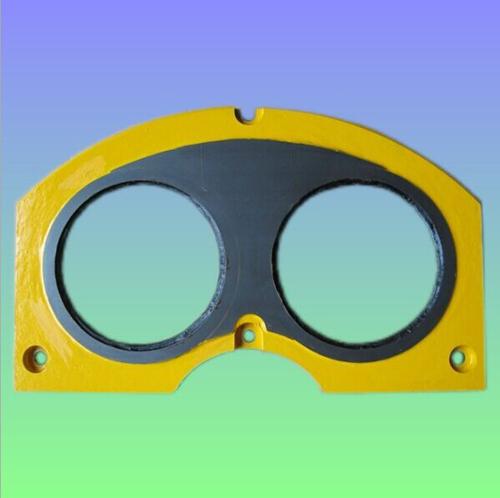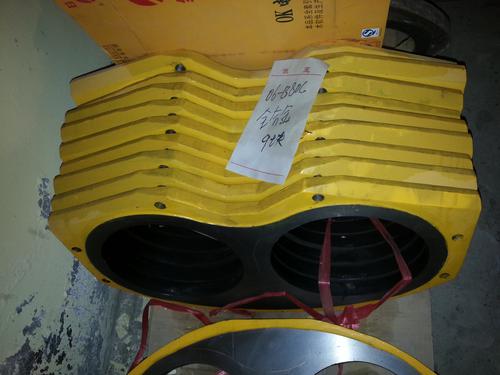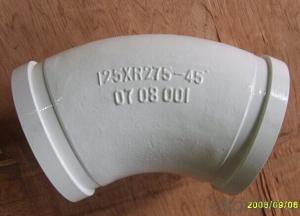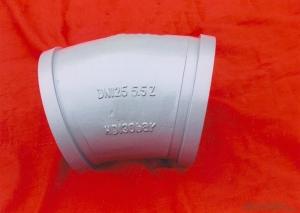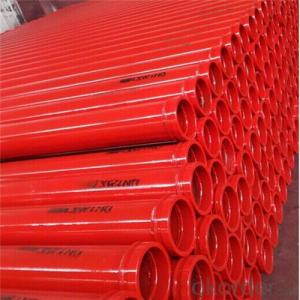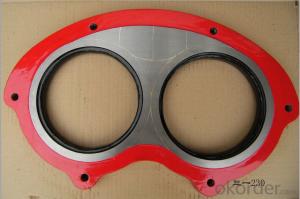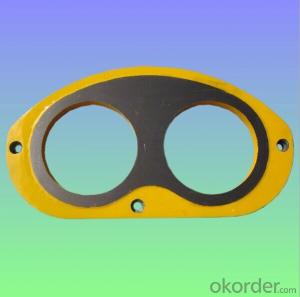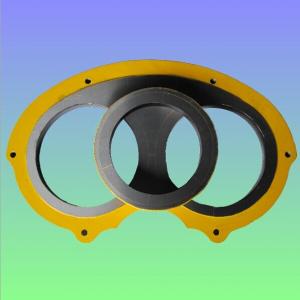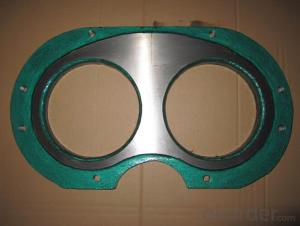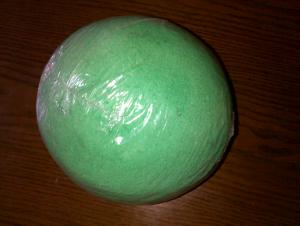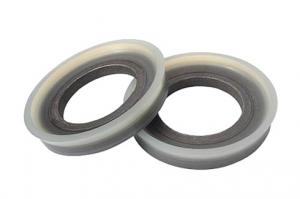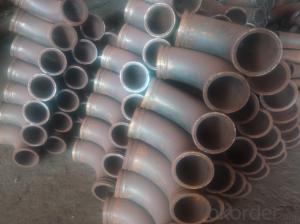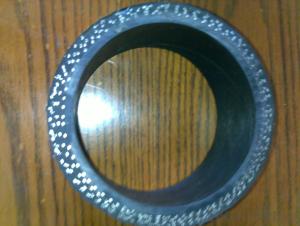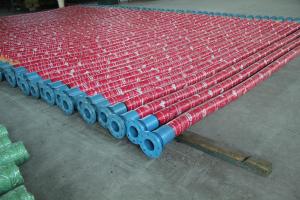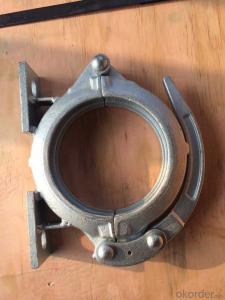CIFA DN230 Spectacle Wear Plate and Cutting Ring
- Loading Port:
- Shanghai
- Payment Terms:
- TT or LC
- Min Order Qty:
- 3 pc
- Supply Capability:
- 1000 pc/month
OKorder Service Pledge
OKorder Financial Service
You Might Also Like
Product Name: CIFA DN230 Spectacle Wear Plate and Cutting Ring
1. Specification
1. Material: Plate body S35C steel, tungsten carbide E5 grade ,
2. Lifetime: 30,000~80,000cbm
3. HRA≥86
4. Germany Welding rod used for hardfacing
5. tensile strength ≥ 2500 N/mm2
6. Application: trailer and trunk mounted CIFA concrete pump
Notes: total series of Concrete Pump Spectacle Wear Plate and Cutting Ring for different brand concrete pump (PUTZMEISTER, SCHWING, CIFA, SANY, ZOOMLION, IHI, KYOKUTO,Niigata Etc) available from us.
2. Application
Our CIFA DN230 Spectacle Wear Plate and Cutting Ring have been successfully exported to many countries from 1998, Our main markets as below: Middle East, Southeast Asia, America, Brazil, Italy, Russia, South Africa etc
Aiming at the largest concrete pump parts manufacturer, and reliable, professional supplier in China, we can supply concrete pump elbows, delivery pipes, casting or forging couplings, end rubber hoses, rubber pistons, tungsten wear plates, delivery cylinders, and other hydraulic parts, one stop service for your concrete pump parts and accessory business.
3. Package
Every 60pcs CIFA DN230 Spectacle Wear Plate and Cutting Ring put in one seaworthy wooden box, and 20 boxes in one 20feet container.
FAQ:
Q1: Why buy Materials & Equipment from us?
A1: All products have its ISO certifications, adheres to the highest standards and a commitment to supply chain safety and customer satisfaction.
Q2: How do we guarantee the quality of our products?
A2: We have established an advanced quality management system which conducts strict quality tests at every step, from raw materials to the final product. At the same time, we provide extensive follow-up service assurances as required.
Q3: How soon can we receive the product after purchase?
A3: Within three days of placing an order, we will begin production. The specific shipping date is dependent upon international and government factors, but is typically 10 to 30 workdays.
Q4: If we can produce some CIFA DN230 Spectacle Wear Plate and Cutting Ring according to customers request?
A4: Yes, we can produce CIFA DN230 Spectacle Wear Plate and Cutting Ring according to the difference country situations and different concrete pump to make it suitable to the market and customers. We have very professional technical team to make the design.
Q5: How to make a quick resolution for after service?
A5:We have overseas branches all-around of world, IF needed, the seller shall dispatch 2 engineers to the buyer's site for supervision of training. The buyer shall make available of necessary facilities &skilled personnel at site for training.
Image:
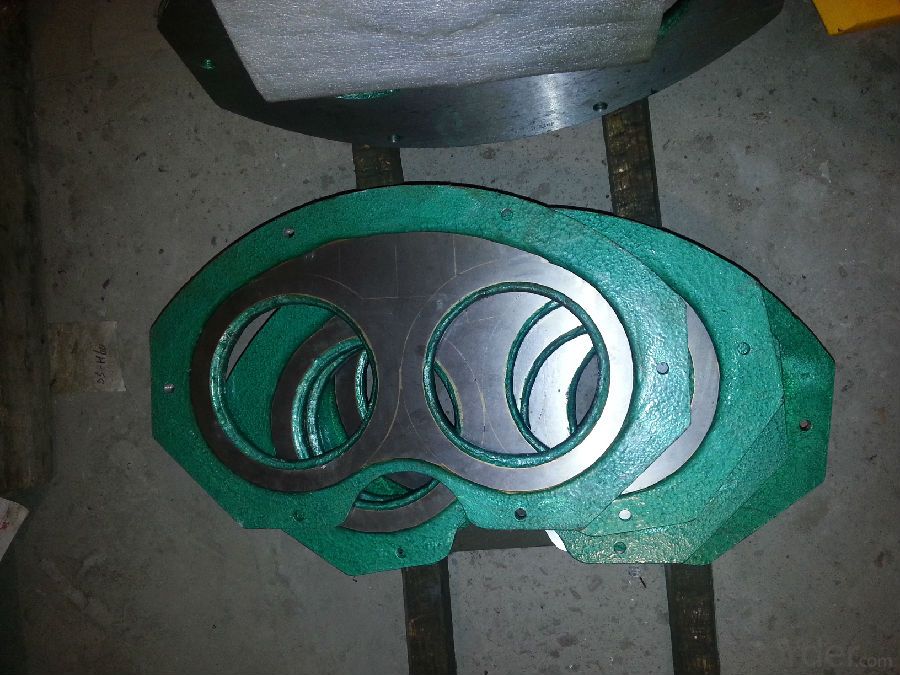
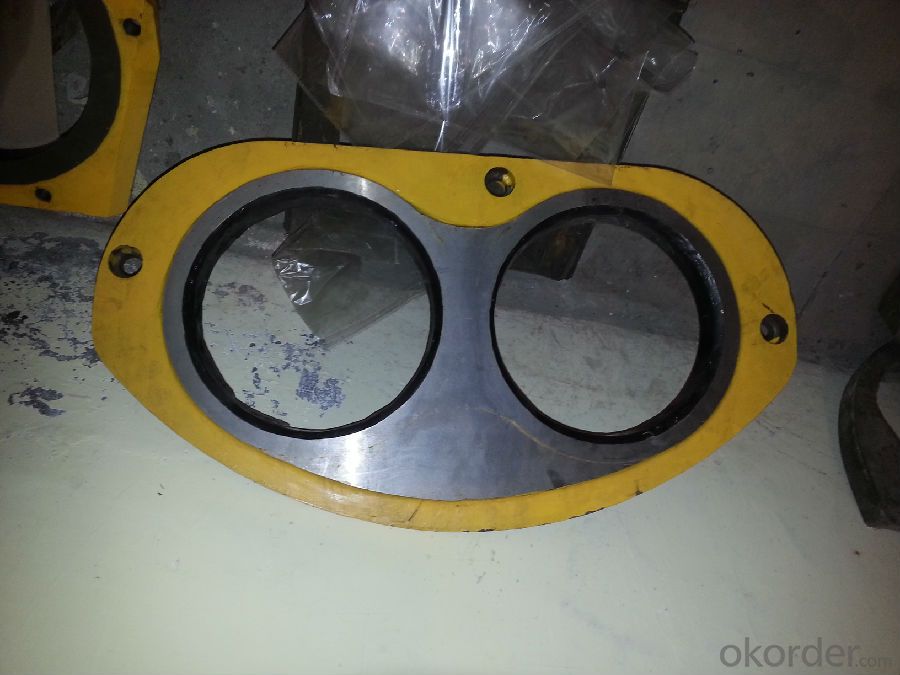
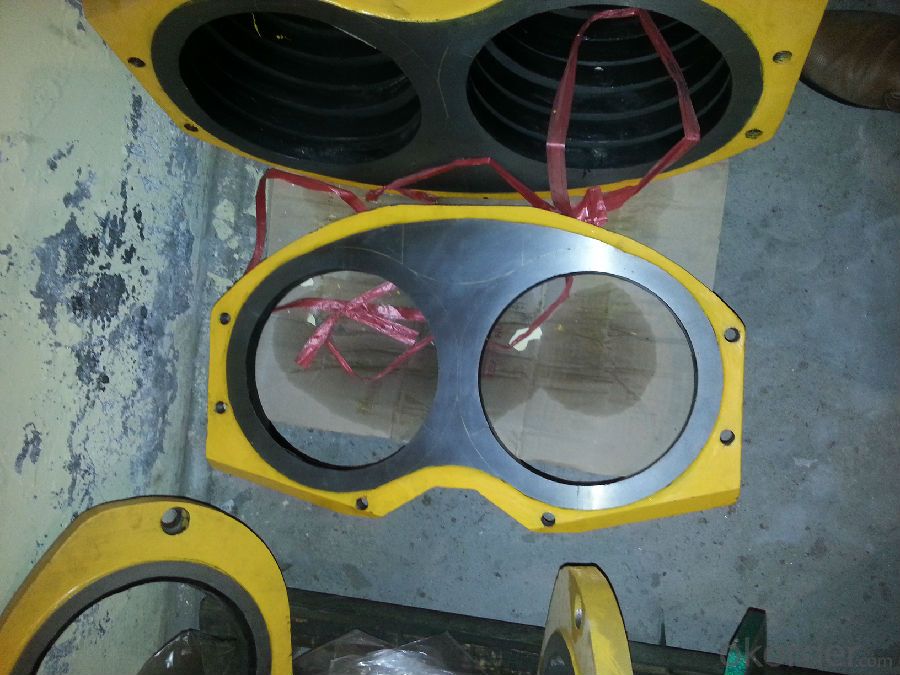
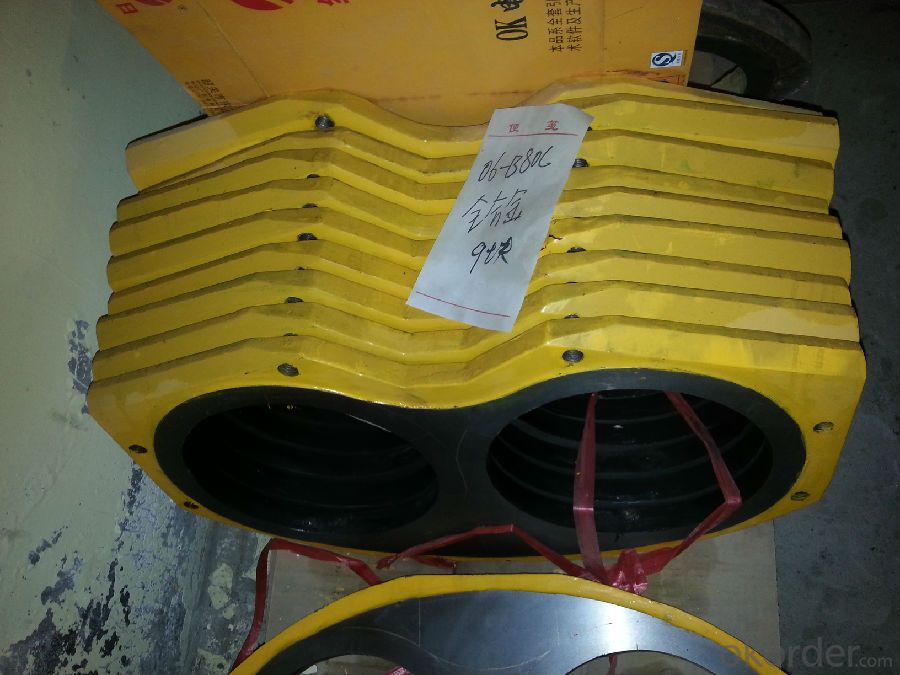
- Q: What are the advantages of using pre-assembled spare parts for concrete pumps?
- There are multiple benefits to utilizing pre-assembled spare parts for concrete pumps. To begin with, the use of pre-assembled spare parts guarantees a swift and efficient replacement process. As these parts come already assembled, they can be effortlessly installed without the need for additional time or effort to assemble them. This helps to reduce downtime and increase productivity on construction sites, as the concrete pump can be swiftly repaired and put back into operation. Additionally, the utilization of pre-assembled spare parts ensures a high level of quality and compatibility. These parts are produced by the original equipment manufacturer (OEM) or authorized suppliers, guaranteeing that they meet the necessary standards and specifications. By employing authentic pre-assembled parts, the performance and longevity of the concrete pump are maintained, minimizing the risk of malfunctions or breakdowns. Another advantage is the cost-effectiveness of pre-assembled spare parts. While the initial cost of these parts may be slightly higher than individual components, they often prove to be more cost-effective in the long run. By purchasing pre-assembled parts, construction companies can avoid the extra costs associated with assembly, such as labor and time. Additionally, using high-quality pre-assembled parts reduces the need for frequent replacements and repairs, saving money on maintenance and downtime expenses. Furthermore, pre-assembled spare parts offer convenience and reliability. Construction projects frequently have strict deadlines, and any delays can be expensive. By having pre-assembled spare parts readily available, construction teams can promptly address any breakdowns or failures, minimizing disruptions to the project timeline. Additionally, the reliability of these parts ensures that the concrete pump will consistently and efficiently operate, reducing the risk of unexpected issues on the construction site. In conclusion, the advantages of utilizing pre-assembled spare parts for concrete pumps encompass quick and efficient replacement, high quality and compatibility, cost-effectiveness, as well as convenience and reliability. By adopting these pre-assembled parts, construction companies can ensure smooth operations, minimize downtime, and maximize productivity on their projects.
- Q: Are there any specific training or certifications required for handling and installing concrete pump spare parts?
- Handling and installing concrete pump spare parts necessitates specific training and certifications. Given the specialized nature of the equipment and the potential risks involved, individuals must undergo appropriate training and obtain relevant certifications. One must first acquire a comprehensive understanding of concrete pumps' functioning and components. This knowledge can be gained through extensive training programs offered by equipment manufacturers, industry associations, and vocational schools. These programs cover topics such as pump operation, maintenance, troubleshooting, and safety protocols. Furthermore, depending on jurisdiction or industry standards, specific certifications may be necessary. For instance, the American Concrete Pumping Association (ACPA) provides the ACPA Operator Certification, which requires individuals to demonstrate their proficiency in concrete pumping equipment, including the handling and installation of spare parts. Obtaining these certifications ensures that individuals possess the necessary knowledge and skills to handle and install concrete pump spare parts safely and efficiently. It also aids in complying with industry regulations and standards. It is crucial to note that the specific training and certification requirements may vary based on the region, industry, and type of concrete pump utilized. Therefore, it is advisable to consult local regulations and industry guidelines to ensure adherence to the requisite training and certification requirements for handling and installing concrete pump spare parts.
- Q: How can a malfunctioning remote control affect the pumping operation?
- A malfunctioning remote control can significantly impact the pumping operation in various ways. Firstly, a remote control is used to operate the pump remotely, allowing operators to control the pump's speed, direction, and other important settings from a distance. If the remote control malfunctions, operators may lose the ability to control the pump effectively, leading to delays or inefficiencies in the pumping operation. Secondly, a malfunctioning remote control may result in inconsistent or erratic commands being sent to the pump. This can lead to unstable pump performance, potentially causing fluctuations in flow rates, pressure, or other critical parameters. Such inconsistencies can affect the overall efficiency and effectiveness of the pumping operation. Additionally, a malfunctioning remote control can pose safety risks. For instance, if the remote control fails to transmit accurate commands, it can potentially result in the pump operating at undesirable speeds or pressures, which may lead to equipment damage or accidents. Moreover, if operators are unable to control the pump remotely during emergencies or hazardous situations, it could hinder their ability to promptly respond and mitigate risks. Furthermore, a malfunctioning remote control may also impact the monitoring and control systems associated with the pumping operation. Remote controls are often integrated with centralized monitoring systems, allowing operators to collect real-time data and receive alerts or alarms. If the remote control fails, it may disrupt the flow of critical information, making it challenging for operators to monitor the pump's performance, identify potential issues, or make informed decisions. In conclusion, a malfunctioning remote control can have detrimental effects on the pumping operation by impeding the ability to control the pump remotely, causing erratic pump performance, posing safety risks, and hindering the monitoring and control systems. Therefore, it is crucial to regularly inspect and maintain remote controls to ensure their proper functionality and minimize any potential disruptions to the pumping operation.
- Q: How often should hopper grate clamps be inspected or replaced in a concrete pump?
- Hopper grate clamps in a concrete pump should be inspected regularly, preferably on a monthly basis, to ensure they are in proper working condition. However, the frequency of inspection may vary depending on the usage and operating conditions of the concrete pump. If the concrete pump is used extensively or subjected to harsh environments, more frequent inspections may be necessary, such as every two weeks or even weekly. On the other hand, if the pump is used less frequently or operates in less demanding conditions, inspections can be done less frequently, such as every two to three months. The purpose of these inspections is to identify any signs of wear, damage, or deterioration in the hopper grate clamps. Any loose or worn-out clamps should be promptly replaced to prevent accidents or disruptions during concrete pumping operations. It is crucial to prioritize safety and ensure that the hopper grate clamps are in good condition to secure the hopper grate effectively and prevent any unwanted material spillage. Regular inspections and timely replacements of hopper grate clamps will help maintain the efficiency and reliability of the concrete pump, ensuring uninterrupted operation and minimizing the risk of any potential issues.
- Q: Can I get spare parts for both concrete pumps with and without emergency stop systems?
- Yes, you can get spare parts for both concrete pumps with and without emergency stop systems. Most manufacturers and suppliers of concrete pumps offer a wide range of spare parts that are compatible with various models and types of pumps. These spare parts include components like hoses, pipes, valves, seals, and other essential parts that may need replacement due to wear and tear or damage. Whether your concrete pump has an emergency stop system or not, you should be able to find the necessary spare parts to keep your pump running smoothly. However, it is important to note that the availability of specific spare parts may vary depending on the brand, model, and age of your concrete pump. To ensure you get the right spare parts, it is advisable to consult the manufacturer or supplier of your concrete pump. They can provide you with a comprehensive list of spare parts and guide you in selecting the appropriate ones for your specific pump. Additionally, they may also be able to assist you with any technical support or troubleshooting related to your concrete pump.
- Q: How often should concrete pump control valves be inspected and replaced?
- Concrete pump control valves should be inspected regularly, at least once every six months, to ensure they are in proper working condition. However, the frequency of replacement depends on various factors such as usage, maintenance, and wear and tear. It is recommended to replace control valves as soon as signs of significant damage or malfunctioning are observed during the inspections.
- Q: What are the specifications for concrete delivery pumps?
- In the cold season, the construction of concrete pump should have anti freeze measures
- Q: Are there any specific cleaning and maintenance procedures for concrete pump spare parts?
- Yes, there are specific cleaning and maintenance procedures for concrete pump spare parts. For cleaning, it is important to remove any concrete buildup or residue from the spare parts regularly. This can be done by using a high-pressure water jet or by soaking the parts in a cleaning solution specifically designed for concrete. It is essential to follow the manufacturer's instructions when using cleaning agents to ensure the safety and effectiveness of the cleaning process. In addition to cleaning, regular maintenance is necessary to ensure the longevity and proper functioning of concrete pump spare parts. This includes inspecting the parts for any signs of wear, such as cracks or corrosion, and replacing them if necessary. Lubrication of moving parts, such as bearings or pistons, should also be done as per the manufacturer's recommendations. It is important to note that different concrete pump spare parts may require specific cleaning and maintenance procedures. Therefore, it is advisable to refer to the manufacturer's guidelines or consult with a qualified technician to determine the appropriate cleaning and maintenance procedures for each specific part.
- Q: Can concrete pump spare parts be repaired or refurbished?
- Concrete pump spare parts have the potential to be repaired or refurbished. Spare parts such as seals, bearings, valves, and hydraulic components can undergo repair or refurbishment processes, which can effectively prolong their lifespan and result in cost savings. The repair or refurbishment of these parts may involve the replacement of worn-out or damaged components, the reconditioning or re-machining of certain parts, and the execution of necessary maintenance and testing procedures to ensure their proper functionality. Moreover, some manufacturers or specialized companies may provide services specifically for repairing or refurbishing specific concrete pump spare parts, offering a more cost-effective alternative to purchasing entirely new parts. Nevertheless, it is crucial to acknowledge that not all spare parts are suitable for repair or refurbishment, especially if they are severely damaged or have exceeded their recommended service life. In such circumstances, it may be more practical and safer to opt for the replacement of these parts with new ones.
- Q: What are the precautions for gas washing of concrete pump?
- If it is found that the wash is not moving, it should first close the intake valve, and then slowly open the exhaust valve bleeding, and then try to segment cleaning.
Send your message to us
CIFA DN230 Spectacle Wear Plate and Cutting Ring
- Loading Port:
- Shanghai
- Payment Terms:
- TT or LC
- Min Order Qty:
- 3 pc
- Supply Capability:
- 1000 pc/month
OKorder Service Pledge
OKorder Financial Service
Similar products
Hot products
Hot Searches
Related keywords
